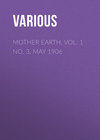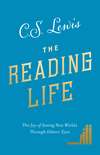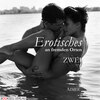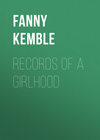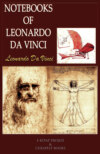Kitabı oku: «The Notebooks of Leonardo Da Vinci. Complete», sayfa 17
430
The shadows of plants are never black, for where the atmosphere penetrates there can never be utter darkness.
431
If the light comes from m and the eye is at n the eye will see the colour of the leaves a b all affected by the colour of m —that is of the atmosphere; and b c will be seen from the under side as transparent, with a beautiful green colour verging on yellow.
If m is the luminous body lighting up the leaf s all the eyes that see the under side of this leaf will see it of a beautiful light green, being transparent.
In very many cases the positions of the leaves will be without shadow [or in full light], and their under side will be transparent and the right side lustrous [reflecting light].
432
The willow and other similar trees, which have their boughs lopped every 3 or 4 years, put forth very straight branches, and their shadow is about the middle where these boughs spring; and towards the extreme ends they cast but little shade from having small leaves and few and slender branches. Hence the boughs which rise towards the sky will have but little shade and little relief; and the branches which are at an angle from the horizon, downwards, spring from the dark part of the shadow and grow thinner by degrees up to their ends, and these will be in strong relief, being in gradations of light against a background of shadow.
That tree will have the least shadow which has the fewest branches and few leaves.
433
OF DARK LEAVES IN FRONT OF TRANSPARENT ONES.
When the leaves are interposed between the light and the eye, then that which is nearest to the eye will be the darkest, and the most distant will be the lightest, not being seen against the atmosphere; and this is seen in the leaves which are away from the centre of the tree, that is towards the light.
[Footnote: See Pl. XXVIII, No. 2, the lower sketch.]
434
OF THE LIGHTS ON DARK LEAVES.
The lights on such leaves which are darkest, will be most near to the colour of the atmosphere that is reflected in them. And the cause of this is that the light on the illuminated portion mingles with the dark hue to compose a blue colour; and this light is produced by the blueness of the atmosphere which is reflected in the smooth surface of these leaves and adds to the blue hue which this light usually produces when it falls on dark objects.
OF THE LIGHTS ON LEAVES OF A YELLOWISH GREEN.
But leaves of a green verging on yellow when they reflect the atmosphere do not produce a reflection verging on blue, inasmuch as every thing which appears in a mirror takes some colour from that mirror, hence the blue of the atmosphere being reflected in the yellow of the leaf appears green, because blue and yellow mixed together make a very fine green colour, therefore the lustre of light leaves verging on yellow will be greenish yellow.
A classification of trees according to their colours.
435
The trees in a landscape are of various kinds of green, inasmuch as some verge towards blackness, as firs, pines, cypresses, laurels, box and the like. Some tend to yellow such as walnuts, and pears, vines and verdure. Some are both yellowish and dark as chesnuts, holm-oak. Some turn red in autumn as the service-tree, pomegranate, vine, and cherry; and some are whitish as the willow, olive, reeds and the like. Trees are of various forms …
The proportions of light and shade in trees (436-440).
436
OF A GENERALLY DISTRIBUTED LIGHT AS LIGHTING UP TREES.
That part of the trees will be seen to lie in the least dark shadow which is farthest from the earth.
To prove it let a p be the tree, n b c the illuminated hemisphere [the sky], the under portion of the tree faces the earth p c, that is on the side o, and it faces a small part of the hemisphere at c d. But the highest part of the convexity a faces the greatest part of the hemisphere, that is b c. For this reason—and because it does not face the darkness of the earth—it is in fuller light. But if the tree has dense foliage, as the laurel, arbutus, box or holm oak, it will be different; because, although a does not face the earth, it faces the dark [green] of the leaves cut up by many shadows, and this darkness is reflected onto the under sides of the leaves immediately above. Thus these trees have their darkest shadows nearest to the middle of the tree.
437
OF THE SHADOWS OF VERDURE.
The shadows of verdure are always somewhat blue, and so is every shadow of every object; and they assume this hue more in proportion as they are remote from the eye, and less in proportion as they are nearer. The leaves which reflect the blue of the atmosphere always present themselves to the eye edgewise.
OF THE ILLUMINATED PART OF VERDURE AND OF MOUNTAINS.
The illuminated portion, at a great distance, will appear most nearly of its natural colour where the strongest light falls upon it.
438
OF TREES THAT ARE LIGHTED BY THE SUN AND BY THE ATMOSPHERE.
In trees that are illuminated [both] by the sun and the atmosphere and that have leaves of a dark colour, one side will be illuminated by the atmosphere [only] and in consequence of this light will tend to blueness, while on the other side they will be illuminated by the atmosphere and the sun; and the side which the eye sees illuminated by the sun will reflect light.
439
OF DEPICTING A FOREST SCENE.
The trees and plants which are most thickly branched with slender branches ought to have less dark shadow than those trees and plants which, having broader leaves, will cast more shadow.
440
ON PAINTING.
In the position of the eye which sees that portion of a tree illuminated which turns towards the light, one tree will never be seen to be illuminated equally with the other. To prove this, let the eye be c which sees the two trees b d which are illuminated by the sun a; I say that this eye c will not see the light in the same proportion to the shade, in one tree as in the other. Because, the tree which is nearest to the sun will display so much the stronger shadow than the more distant one, in proportion as one tree is nearer to the rays of the sun that converge to the eye than the other; &c.
You see that the eye c sees nothing of the tree d but shadow, while the same eye c sees thč tree b half in light and half in shade.
When a tree is seen from below, the eye sees the top of it as placed within the circle made by its boughs[23].
Remember, O Painter! that the variety of depth of shade in any one particular species of tree is in proportion to the rarity or density of their branches.
[Footnote: The two lower sketches on the left of Pl XXVIII, No. 3, refer to lines 21-23. The upper sketch has apparently been effaced by Leonardo himself.]
The distribution of light and shade with reference to the position of the spectator (441-443).
441
The shadows of trees placed in a landscape do not display themselves in the same position in the trees on the right hand and those on the left; still more so if the sun is to the right or left. As is proved by the 4th which says: Opaque bodies placed between the light and the eye display themselves entirely in shadow; and by the 5th: The eye when placed between the opaque body and the light sees the opaque body entirely illuminated. And by the 6th: When the eye and the opaque body are placed between darkness and light, it will be seen half in shadow and half in light.
[Footnote: See the figure on the right hand side of Pl. XXVIII, No. 3. The first five lines of the text are written below the diagram and above it are the last eight lines of the text, given as No. 461.]
442
OF THE HERBS OF THE FIELD.
Of the plants which take a shadow from the plants which spring among them, those which are on this side [in front] of the shadow have the stems lighted up on a background of shadow, and the plants on which the shadows fall have their stems dark on a light background; that is on the background beyond the shadow.
OF TREES WHICH ARE BETWEEN THE EYE AND THE LIGHT.
Of the trees which are between the eye and the light the part in front will be light; but this light will be broken by the ramifications of transparent leaves—being seen from the under side—and lustrous leaves—being seen from the upper side; and the background below and behind will be dark green, being in shadow from the front portion of the said tree. This occurs in trees placed above the eye.
443
FROM WHENCE TO DEPICT A LANDSCAPE
Landscapes should be represented so that the trees may be half in light and half in shadow; but it is better to do them when the sun is covered with clouds, for then the trees are lighted by the general light of the sky, and the general darkness of the earth. And then they are darkest in certain parts in proportion as those parts are nearest to the middle of the tree and to the earth.
The effects of morning light (444-448).
444
OF TREES TO THE SOUTH.
When the sun is in the east the trees to the South and to the North have almost as much light as shadow. But a greater share of light in proportion as they lie to the West and a greater share of shadow in proportion as they lie to the East.
OF MEADOWS.
If the sun is in the East the verdure of the meadows and of other small plants is of a most beautiful green from being transparent to the sun; this does not occur in the meadows to the West, and in those to the South and North the grass is of a moderately brilliant green.
445
OF THE 4 POINTS OF THE COMPASS [IN LANDSCAPES].
When the sun is in the East all the portions of plants lighted by it are of a most lively verdure, and this happens because the leaves lighted by the sun within the half of the horizon that is the Eastern half, are transparent; and within the Western semicircle the verdure is of a dull hue and the moist air is turbid and of the colour of grey ashes, not being transparent like that in the East, which is quite clear and all the more so in proportion as it is moister.
The shadows of the trees to the East cover a large portion of them and are darker in proportion as the foliage of the trees is thicker.
446
OF TREES IN THE EAST.
When the sun is in the East the trees seen towards the East will have the light which surrounds them all round their shadows, excepting on the side towards the earth; unless the tree has been pruned [below] in the past year. And the trees to the South and North will be half in shade and half in light, and more or less in shade or in light in proportion as they are more or less to the East or to the West.
The [position of] the eye above or below varies the shadows and lights in trees, inasmuch as the eye placed above sees the tree with the little shadow, and the eye placed below with a great deal of shadow.
The colour of the green in plants varies as much as their species.
447
OF THE SHADOWS IN TREES.
The sun being in the East [to the right], the trees to the West [or left] of the eye will show in small relief and almost imperceptible gradations, because the atmosphere which lies between the eye and those trees is very dense [Footnote 7: per la 7a di questo. This possibly referred to something written on the seventh page of this note book marked G. Unfortunately it has been cut out and lost.], see the 7th of this—and they have no shade; for though a shadow exists in every detail of the ramification, it results that the images of the shade and light that reach the eye are confused and mingled together and cannot be perceived on account of their minuteness. And the principal lights are in the middle of the trees, and the shadows to wards the edges; and their separation is shown by the shadows of the intervals between the trees; but when the forests are thick with trees the thin edges are but little seen.
448
OF TREES TO THE EAST.
When the sun is in the East the trees are darker towards the middle while their edges are light.
The effects of midday light.
449
OBJECTS IN HIGH LIGHT SHOW BUT LITTLE, BUT BETWEEN LIGHT AND SHADOW THEY STAND OUT WELL.
To represent a landscape choose that the sun shall be at noon and look towards the West or East and then draw. And if you turn towards the North, every object placed on that side will have no shadow, particularly those which are nearest to the [direction of the] shadow of your head. And if you turn towards the South every object on that side will be wholly in shadow. All the trees which are towards the sun and have the atmosphere for their background are dark, and the other trees which lie against that darkness will be black [very dark] in the middle and lighter towards the edges.
The appearance of trees in the distance (450. 451).
450
OF THE SPACES [SHOWING THE SKY] IN TREES THEMSELVES.
The spaces between the parts in the mass of trees, and the spaces between the trees in the air, are, at great distances, invisible to the eye; for, where it is an effort [even] to see the whole it is most difficult to discern the parts.—But a confused mixture is the result, partaking chiefly of the [hue] which predominates. The spaces between the leaves consist of particles of illuminated air which are very much smaller than the tree and are lost sight of sooner than the tree; but it does not therefore follow that they are not there. Hence, necessarily, a compounded [effect] is produced of the sky and of the shadows of the tree in shade, which both together strike the eye which sees them.
OF TREES WHICH CONCEAL THESE SPACES IN ONE ANOTHER.
That part of a tree will show the fewest spaces, behind which a large number of trees are standing between the tree and the air [sky]; thus in the tree a the spaces are not concealed nor in b, as there is no tree behind. But in c only half shows the spaces filled up by the tree d, and part of the tree d is filled up by the tree e and a little farther on all the spaces in the mass of the trees are lost, and only that at the side remains.
451
OF TREES.
What outlines are seen in trees at a distance against the sky which serves as their background?
The outlines of the ramification of trees, where they lie against the illuminated sky, display a form which more nearly approaches the spherical on proportion as they are remote, and the nearer they are the less they appear in this spherical form; as in the first tree a which, being near to the eye, displays the true form of its ramification; but this shows less in b and is altogether lost in c, where not merely the branches of the tree cannot be seen but the whole tree is distinguished with difficulty. Every object in shadow, of whatever form it may be, at a great distance appears to be spherical. And this occurs because, if it is a square body, at a very short distance it loses its angles, and a little farther off it loses still more of its smaller sides which remain. And thus before the whole is lost [to sight] the parts are lost, being smaller than the whole; as a man, who in such a distant position loses his legs, arms and head before [the mass of] his body, then the outlines of length are lost before those of breadth, and where they have become equal it would be a square if the angles remained; but as they are lost it is round.
[Footnote: The sketch No. 4, Pl. XXVIII, belongs to this passage.]
The cast shadow of trees (452. 453).
452
The image of the shadow of any object of uniform breadth can never be [exactly] the same as that of the body which casts it.
[Footnote: See Pl. XXVIII, No. 5.]
Light and shade on groups of trees (453-457).
453
All trees seen against the sun are dark towards the middle and this shadow will be of the shape of the tree when apart from others.
The shadows cast by trees on which the sun shines are as dark as those of the middle of the tree.
The shadow cast by a tree is never less than the mass of the tree but becomes taller in proportion as the spot on which it falls, slopes towards the centre of the world.
The shadow will be densest in the middle of the tree when the tree has the fewest branches.
[Footnote: The three diagrams which accompany this text are placed, in the original, before lines 7-11. At the spots marked B Leonardo wrote Albero (tree). At A is the word Sole (sun), at C Monte (mountain) at D piano (plain) and at E cima (summit).]
Every branch participates of the central shadow of every other branch and consequently [of that] of the whole tree.
The form of any shadow from a branch or tree is circumscribed by the light which falls from the side whence the light comes; and this illumination gives the shape of the shadow, and this may be of the distance of a mile from the side where the sun is.
If it happens that a cloud should anywhere overshadow some part of a hill the [shadow of the] trees there will change less than in the plains; for these trees on the hills have their branches thicker, because they grow less high each year than in the plains. Therefore as these branches are dark by nature and being so full of shade, the shadow of the clouds cannot darken them any more; but the open spaces between the trees, which have no strong shadow change very much in tone and particularly those which vary from green; that is ploughed lands or fallen mountains or barren lands or rocks. Where the trees are against the atmosphere they appear all the same colour—if indeed they are not very close together or very thickly covered with leaves like the fir and similar trees. When you see the trees from the side from which the sun lights them, you will see them almost all of the same tone, and the shadows in them will be hidden by the leaves in the light, which come between your eye and those shadows.
TREES AT A SHORT DISTANCE.
[Footnote 29: The heading alberi vicini (trees at a short distance) is in the original manuscript written in the margin.] When the trees are situated between the sun and the eye, beyond the shadow which spreads from their centre, the green of their leaves will be seen transparent; but this transparency will be broken in many places by the leaves and boughs in shadow which will come between you and them, or, in their upper portions, they will be accompanied by many lights reflected from the leaves.
454
The trees of the landscape stand out but little from each other; because their illuminated portions come against the illuminated portions of those beyond and differ little from them in light and shade.
455
Of trees seen from below and against the light, one beyond the other and near together. The topmost part of the first will be in great part transparent and light, and will stand out against the dark portion of the second tree. And thus it will be with all in succession that are placed under the same conditions.
Let s be the light, and r the eye, c d n the first tree, a b c the second. Then I say that r, the eye, will see the portion c f in great part transparent and lighted by the light s which falls upon it from the opposite side, and it will see it, on a dark ground b c because that is the dark part and shadow of the tree a b c.
But if the eye is placed at t it will see o p dark on the light background n g.
Of the transparent and shadowy parts of trees, that which is nearest to you is the darkest.
456
That part of a tree which has shadow for background, is all of one tone, and wherever the trees or branches are thickest they will be darkest, because there are no little intervals of air. But where the boughs lie against a background of other boughs, the brighter parts are seen lightest and the leaves lustrous from the sunlight falling on them.
457
In the composition of leafy trees be careful not to repeat too often the same colour of one tree against the same colour of another [behind it]; but vary it with a lighter, or a darker, or a stronger green.
On the treatment of light for landscapes (458-464).
458
The landscape has a finer azure [tone] when, in fine weather the sun is at noon than at any other time of the day, because the air is purified of moisture; and looking at it under that aspect you will see the trees of a beautiful green at the outside and the shadows dark towards the middle; and in the remoter distance the atmosphere which comes between you and them looks more beautiful when there is something dark beyond. And still the azure is most beautiful. The objects seen from the side on which the sun shines will not show you their shadows. But, if you are lower than the sun, you can see what is not seen by the sun and that will be all in shade. The leaves of the trees, which come between you and the sun are of two principal colours which are a splendid lustre of green, and the reflection of the atmosphere which lights up the objects which cannot be seen by the sun, and the shaded portions which only face the earth, and the darkest which are surrounded by something that is not dark. The trees in the landscape which are between you and the sun are far more beautiful than those you see when you are between the sun and them; and this is so because those which face the sun show their leaves as transparent towards the ends of their branches, and those that are not transparent—that is at the ends—reflect the light; and the shadows are dark because they are not concealed by any thing.
The trees, when you place yourself between them and the sun, will only display to you their light and natural colour, which, in itself, is not very strong, and besides this some reflected lights which, being against a background which does not differ very much from themselves in tone, are not conspicuous; and if you are lower down than they are situated, they may also show those portions on which the light of the sun does not fall and these will be dark.
In the Wind.
But, if you are on the side whence the wind blows, you will see the trees look very much lighter than on the other sides, and this happens because the wind turns up the under side of the leaves, which, in all trees, is much whiter than the upper sides; and, more especially, will they be very light indeed if the wind blows from the quarter where the sun is, and if you have your back turned to it.
[Footnote: At S, in the original is the word Sole (sun) and at N parte di nuvolo (the side of the clouds).]

